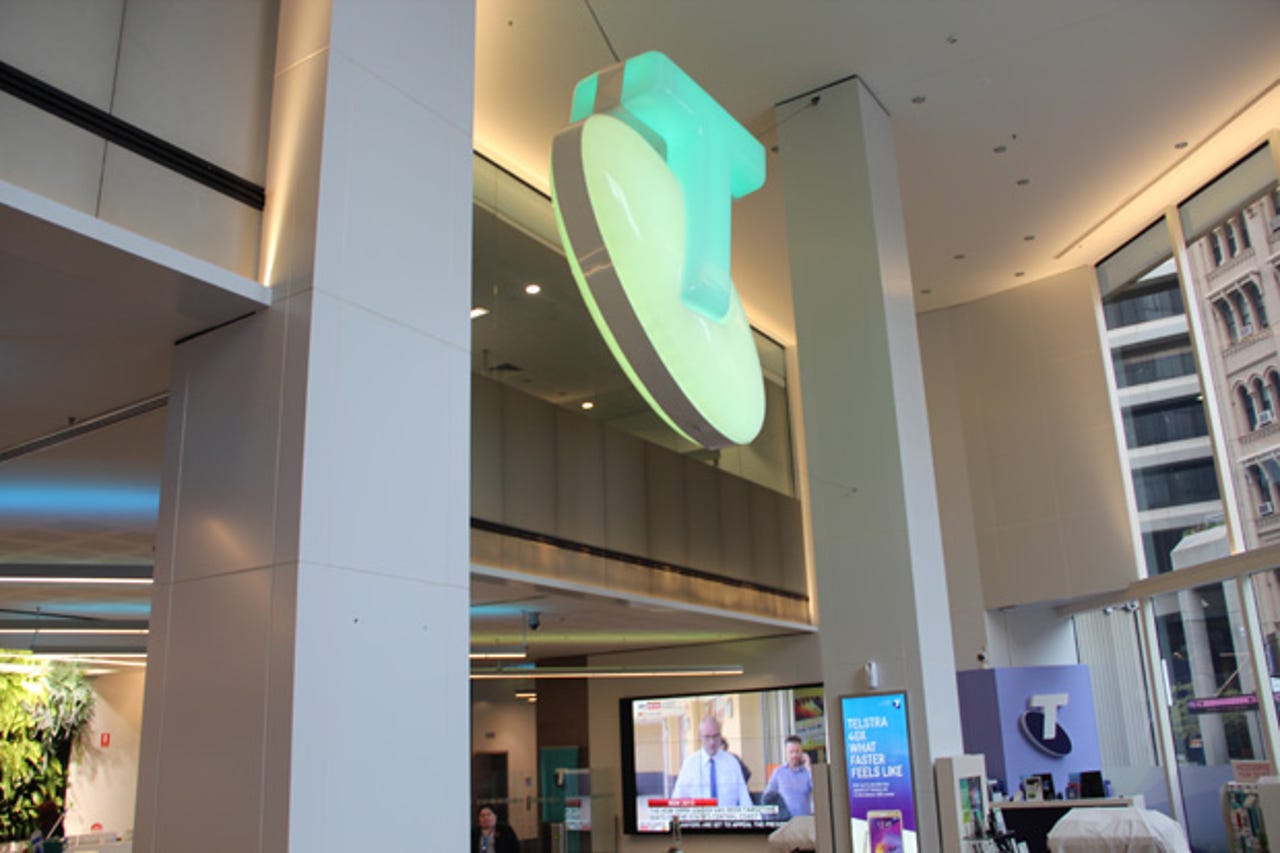Inside Telstra's digital contact centre

Deep inside Telstra's Adelaide office, 30 staff members have been recruited to answer tweets, Facebook comments, and Crowdsupport posts 24 hours a day, seven days a week, as the company looks to become truly digital.
Over the past few years, as the company's mobile customer base has grown to over 16 million, Telstra has witnessed a decline in its overall call centre call volume, and has increasingly moved its contact centre services out of Australia.
Despite the criticism for the associated job losses in Australia, Telstra has made no apologies for its shift away from the traditional call centre. CEO David Thodey first flagged in 2013 that he expected to increase using overseas contact centres as the trend shifted from calls to online interactions.
"On the offshoring of work, our customers increasingly want to interact with us online. Forty percent of customer transactions were completed online in 2013 -- compared to only 30 percent in 2012 -- and this percentage will grow again this year," he said.
"This means that our contact centre work is declining quickly and will continue to do so."
At the company's most recent results, Thodey said that in the first half of this financial year, there were around 400,000 calls to the company's call centre, versus 800,000 online interactions with Telstra customers in the half.
Many of those engagements not only happen through the company's chat function in the online account management tools, but also from Telstra's Facebook page, Twitter account, and Crowdsupport forum.
To meet this growing demand, Telstra now has a team of 30 based in Adelaide working on a rotating 24/7 roster to respond to these social media queries. The 24-hour service has been operational for over 1,300 days, and the team typically has between 1,000 and 1,500 conversations daily, with a quarter of these occurring after 6pm every day. Each worker deals with about 100 requests per shift .
This can significantly increase if there is a natural disaster or a widespread outage.
Telstra uses Lithium, a social networking application that pools the queries and spreads out tasks to the team on a shift at any one point. The application allows the staff member to gauge a response from a customer as being good or bad, and see detail on their social media accounts, including their Klout score.
The company aims to have an initial response within 60 minutes, and then checks back in every four hours if a response has not been received.
A good portion of those daily responses to customer inquiries could be easily summed up as "Let me Google that for you...", but Monty Hamilton, Telstra's director of digital operations, told ZDNet that the team isn't aiming to deter customers from contacting Telstra.
"It doesn't matter; our job is to help the customer resolve that issue," he said.
Telstra gets most of its queries through Facebook, Hamilton said, but Twitter users are more clued in.
"Typically, what we see in Twitter is a level of technical aptitude that exists in baseline Twitter users that is above Facebook," he said.
"The richness of inquiries there are greater, and also the reach of those conversations."
Above Twitter, however, is Crowdsupport. The discussion forum deals most frequently with questions about ADSL broadband, and questions related to online gaming. Telstra staff often go to respond to an inquiry on Crowdsupport, only to find that another customer has already chimed in with the answer.
"We need to stop being the master of the content ourselves, and play much more of a curation role and be supportive of people who, through goodwill, are sharing their experiences -- good, bad, and in some cases ugly," Hamilton said.
"We do moderate the content, [but] it is very much about ensuring the conversation is nice, as opposed to favourable of our products."
Hamilton was brought over from Ubank, following Telstra's digital director Gerd Schenkel in 2011. Telstra had been on Twitter in 2008, but Hamilton said that 2011 was when the company began to take it seriously, with the 24/7 operation.
"A business that might operate in Australian time zones can longer prescribe its accessibility to customers. We need to be available when our customers need us," he said.
The company's digital contact team is based out of Adelaide, but the company also has six technical consultants based in Townsville and Perth. Given the company receives much more technical questions online than in contact centres, Hamilton said there is some knowledge building in the company, but mostly the staff work together on internal social networks to figure out complex issues.
"We run our own internal version of Crowdsupport called Peersupport. We have several thousand employees who are actively contributing to knowledge management now. We also run Yammer internally," he said.
"Our goal is to try and use those digital tools and methodologies to try to accelerate that, but nothing beats having a tight network of people here."
In the office, there is also a room set up with a selection of all the devices Telstra has on sale currently, so if a customer is having an issue with their phone, the staff member can attempt to replicate and resolve that issue on the same type of phone.
Staff members are generally reviewed on the number of inquiries they have, and the number of phone call follow-ups they take for customers who request a call.
Growth of the digital team in Adelaide would continue, he said, but Telstra is also looking at more flexible working arrangements that could allow staff to work from an interstate office.
"There's no physical need to be in Adelaide. We want them to connect to a great team environment, but nothing geographically forces them to be here, but it is where we have chosen to grow," he said.
Josh Taylor travelled to Adelaide as a guest of Telstra.
